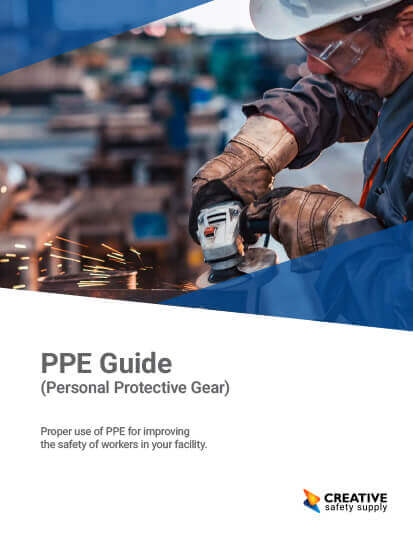
PPE is the acronym for personal protective equipment, referring to garments or equipment specifically designed to be worn. It can be the last line of defense between an individual and an injury, illnesses, or even death. PPE limits the exposure to hazards, protecting them from coming into contact with dangerous chemical, physical, radiological, electrical, mechanical, or other workplace hazards. Common PPE items include safety gloves, safety boots, hard hats, ear muffs or ear plugs, hi-vis vests, balaclavas, eye protection, and more.
OSHA has developed several comprehensive regulations for PPE in the workplace. First, The personal protective equipment should be safely designed and constructed, following any applicable standards. For instance, OSHA refers to the ANSI z87.1 standard for the appropriate design of safety glasses and goggles. It is important for the employer to provide PPE that fits properly and comfortably. Comfort can influence the willingness of a worker to don the PPE and ill-fitting PPE can dangerously expose them to a hazard.
Before purchasing the personal protective equipment, employers are responsible for conducting a hazard assessment of the facility to identify and control hazards. The appropriate PPE is then selected and handed out to workers. It should be noted employers under the OSH Law are required to provide PPE to their employees at no charge to them.
Additionally, OSHA requires that each employee using PPE must receive training. Workers must know what situations, tasks, or areas call for PPE, what kind of PPE is necessary, how to properly don, adjust, wear, and doff PPE, the limitations of the equipment, and the proper care, maintenance, and disposal of the PPE. If workers don’t understand one of these things, the PPE they use can be virtually useless.
Workers are responsible for caring for and cleaning their PPE, but employer still holds the obligation to replace worn or damaged equipment. A PPE program should be developed and periodically reviewed and updated to ensure effectiveness. The program will need to address the present workplace hazards, how PPE is selected and used, PPE maintenance, training of employees, and monitoring of the program itself.


